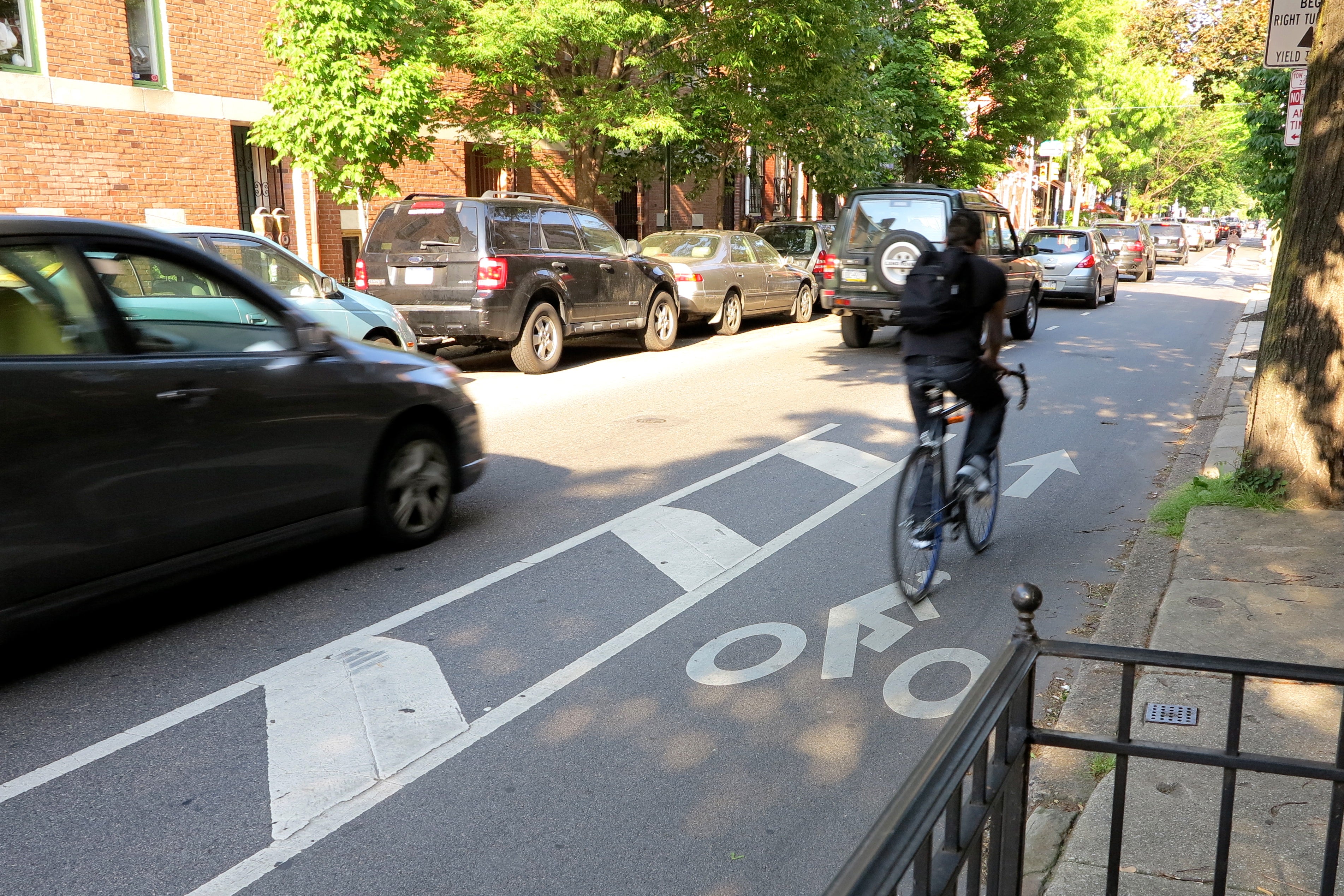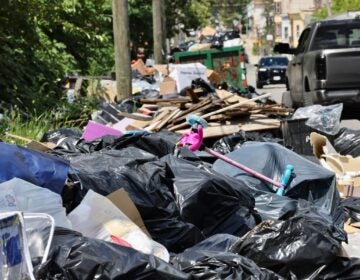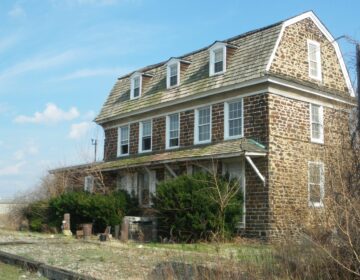The case for moving a bike lane to the left side of the street

After cars collided with two bikers, killing one and leaving another badly injured, on Center City’s aging Spruce and Pine street bike lanes, city transportation planners, urged along by bike advocates, recognized that fixing the aging lanes could no longer wait. Now the city’s Office of Transportation and Infrastructure Systems (OTIS) has a plan to switch the lanes from the ride side to the left. What does this mean? Randy LoBasso of the Bicycle Coalition of Greater Philadelphia, contributing to Metro Philadelphia, explains the potential benefits of making the switch, including giving drivers more visibility and reducing the likelihood of interactions between cyclists and motorists taking right-hand turns. “Right hand “hooks” are the most prevalent type of bicycle crash in cities nationwide,” LoBasso writes. On Spruce and Pine, 61 percent of bicycle collisions are caused by cars turning right, into cyclists, according to a Bicycle Coalition of Greater Philadelphia analysis. Another potential safety benefit is “reduced interactions with SEPTA’s Route 7 bus,” he says. But even with all of these safety wins, more is needed, the bike advocate argues.
“What Spruce and Pine need, for real, are protected bike lanes and protected intersections — physical barriers between cars and cyclists the whole length of the street — and physical changes to the intersections that force motorists to turn wider, not merge into the bike lane.”
Making those changes, though, would require a level of political consensus that hasn’t yet been built, and certainly would cost OTIS more than a few coats of paint. In any case, LoBasso’s op-ed makes for good pre-reading before the two public meetings on April 4th for folks east of Broad Street and the 5th for folks west of Broad Street.
A seat at Franklin Table, Penn’s revamped food hall
Penn’s shiny new food hall at 3401 Walnut Street is “an overpriced and elitist replacement for what was one of the last spots where locals could feel welcome on campus,” Philly Mag’s Ernest Owens argues. Owens laments the loss of the Moravian Food Court, now rebranded as Franklin Table, which once “unashamedly included the neighborhood” and created a living, learning environment where students and working-class locals could eat alongside each other. While increasing the options for interesting foods that celebrate local Philly food destinations, the higher price points at Franklin Table mark a stark difference from the menu items at Quizno’s and Taco Bell. Owens points out another detail that denies access: four of the seven Franklin’s Table merchants don’t accept cash. “If you don’t have a credit or debit card, you essentially can’t take a seat at Franklin’s Table,” Owens writes.
Protecting the oldest green space on Penn’s campus
For another look at how Penn handles public engagement in the private realm, Hidden City takes us back to the ’90s to the Bio Pond Garden, and the fight led by students, faculty, and staff “to save the ecology of the public green from new campus construction.” The garden, which has been considered “sacred ground to the university community” had already been reduced from five to two acres by construction projects over the years. In a familiar narrative, the university announced plans to construct a new life sciences facility adjacent to the pond, the oldest green space on campus, in 2000, insisting “that the disruption would be repairable and only temporary.” Members of the community “saw the construction plan as another example of the university disregarding the wished and well being of surrounding neighborhood.” Sound familiar?
Sometime following the announcement, the university drained the pond, igniting protests to “Save the Bio Pond Garden.” While the university community led the protests, local institutions such as Spiral Q Puppet Theater supported the outcry. But some campus controversies really are just miscommunications and as Hidden City reports, “the pond’s draining was misinterpreted as the beginning of construction on the site.” After the site was dredged, relined, and had its edges redefined like a sharp haircut, Richard and Jeanne Kaskey donated funds to maintain the pond and even add a waterfall and weeping water walls.
Today you can still chillax at the Bio Pond, now the centerpiece of James G. Kaskey Memorial Park and kick it with turtles, crayfish, colorful Koi, resident ducks, and fellow fresh-air seeking Philadelphians.
On the radio: railfans and extinct churches
Pop quiz: what’s the most popular item at the SEPTA store? Answer: the fanny pack. How many SEPTA store customers are SEPTA employees? Answer: half. The other half are diehard ‘railfans.’ On Friday’s NewsWorks Tonight, Jim Saksa rides along on the Super Saturday Streetcar Special XXV (the Saturday before the Super Bowl, where 35 transit fanatics from all over the U.S. rent their own SEPTA trolley and indulge a deep, mysterious passion for a movable feast that most of us take for granted. (Read the full story here.) Also on NWT: PlanPhilly contributor Ashley Hahn explains how Philadelphia lost St. Peter Claver Church, the city’s first black Catholic church, and a “rock” for its African- American community.
WHYY is your source for fact-based, in-depth journalism and information. As a nonprofit organization, we rely on financial support from readers like you. Please give today.







